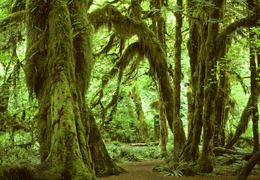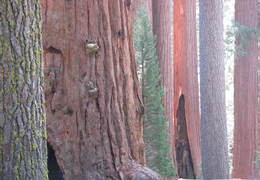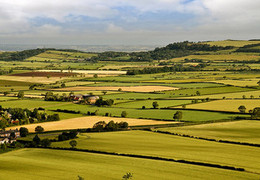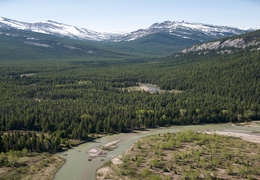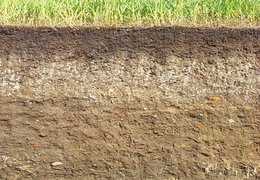Total Ecosystem Carbon Stock
- /ecoregions/
Now Showing: 2006
Summary
Total ecosystem carbon includes above- and below-ground live plant components (such as leaf, branch, stem and root), dead biomass (such as standing dead wood, down woody debris, fine ground litter), and soil organic carbon (in fast, slow and passive pools). For the western United States, the total ecosystem carbon during the baseline period (2001–2005) was estimated between 12,418.3-15,460.6 Tg C. Forests, grasslands/shrublands, and agricultural lands stored about 69 percent, 25 percent, and 4.3 percent of the total carbon, respectively. At the end of 2050, the total ecosystem carbon was estimated to be between 13,743 -19,407 Tg C, an increase of 1,325 to 3,947 TgC from the mean baseline conditions (2001–2005). Among the different ecosystems, forests potentially could store the most carbon, accounting for 70 percent of the total potential carbon storage in the Western United States, followed by grasslands/shrublands (23 percent of the total), and agricultural lands (6 percent).
Suggested Citation
Zhu, Zhiliang, ed., Bergamaschi, Brian, Bernknopf, Richard, Clow, David, Dye, Dennis, Faulkner, Stephen, Forney, William, Gleason, Robert, Hawbaker, Todd, Liu, Jinxun, Liu, Shuguang, Prisley, Stephen, Reed, Bradley, Reeves, Matthew, Rollins, Matthew, Sleeter, Benjamin, Sohl, Terry, Stackpoole, Sarah, Stehman, Stephen, Striegl, Robert, Wein, Anne, and Zhu, Zhiliang, 2010, A method for assessing carbon stocks, carbon sequestration, and greenhouse-gas fluxes in ecosystems of the United States under present conditions and future scenarios: U.S. Geological Survey Scientific Investigations Report 2010–5233, 188 p. (Available from USGS).
Methods
The dynamics of total ecosystem carbon, including carbon in both biomass and soil, were estimated using the USGS General Ensemble Biogeochemical Modeling System (GEMS), which involved three models (Paint-By-Number (PBN) model, CENTURY, and EDCM), under three land use and land cover change (LULCC) scenarios developed in accordance with storylines A1B, A2, or B1 from the Intergovernmental Panel on Climate Change Special Report on Emissions Scenarios (IPCC–SRES) and climate-change projections by three general circulation models (GCMs). Ecosystem carbon dynamics were simulated considering LULCC, disturbances, ecosystem-specific information such as mortality and growth rates, and climate conditions. PBN only accounts for the impacts of land cover change on biomass carbon and does not consider change in soil carbon. CENTURY and EDCM simulate carbon dynamics in vegetation and soils using information from LULCC, climate and atmospheric change, and disturbances. Model outputs for the baseline period were calibrated with alternative forest biomass maps, MODIS NPP products, and grain yield at the county level.
